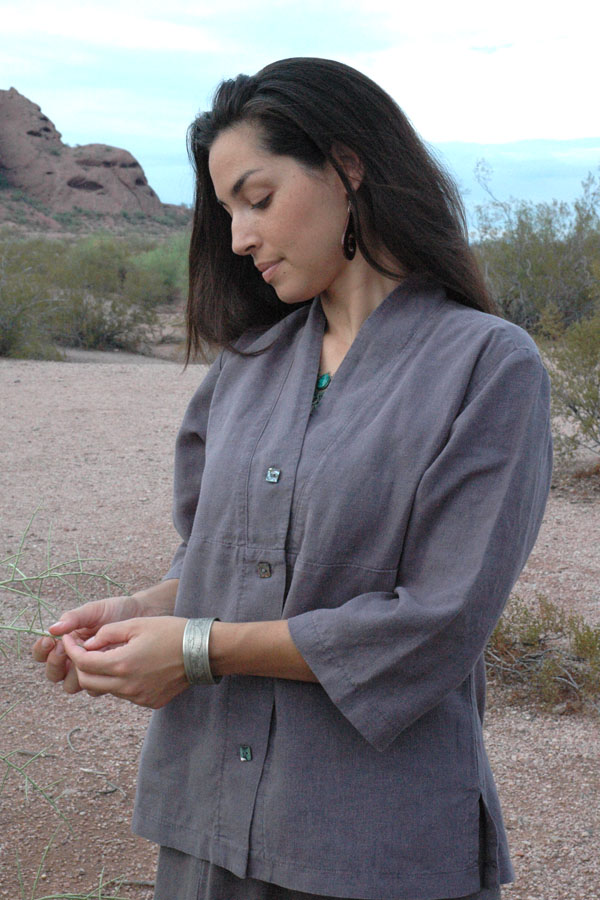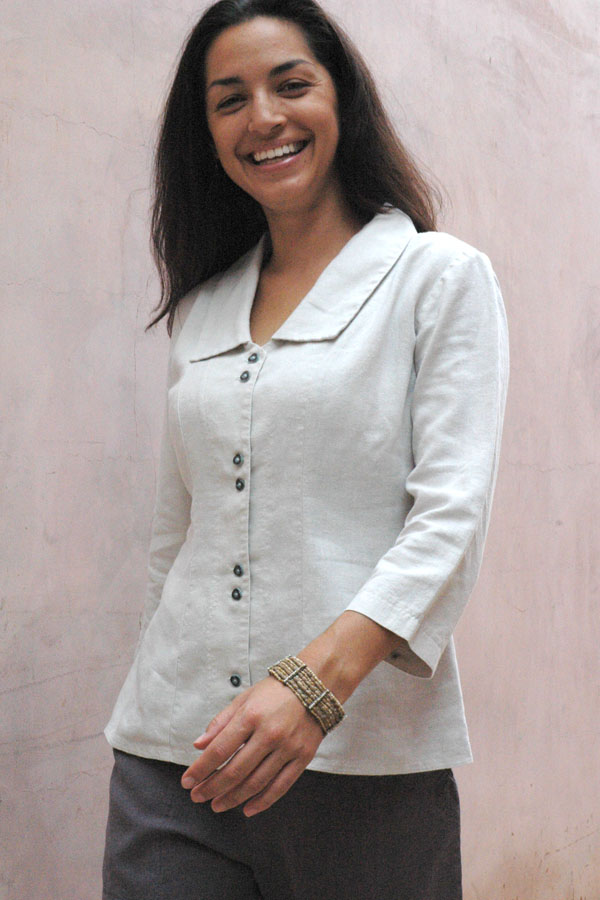Sustainable clothing’s future: Tech turns waste into fashions
Posted by Rose on 20th Apr 2020
A circular, sustainable economy is no pipe dream
From spoiled milk to orange peels to even spider webs, substances once considered waste are the focus of new closed-loop techniques that are upending the way our textiles are made. Some of these projects are still in the early stages while others are being scaled up for mass production. Some, such as the Tencel from farmed eucalyptus trees that makes up 45 percent of Sympatico’s blended hemp and Tencel fabric, have already been available for a decade or more.
Some of the most innovative developments are happening in the realm of agricultural waste. Q Milk in Germany is currently producing a non woven fiber from spoiled milk that’s being used in facial and toilet tissue. The company is now developing fiber for apparel that will soon be reaching the market. The protein fiber Q Milk produces is similar in its qualities to silk and wool, meaning that yarn manufacturers will not need to significantly retool to process it.
Ana enjoys the comfort of our sustainably made Graphite Tuxedo Top.
Currently there are at least two companies engaged in completely different approaches to making faux leather. Piñatex converts the fibrous leaves of pineapples while Bolt Threads' collaboration with Ecovative results in Mylo, a synthetic leather made with mushroom mycelium—the underground root system of the fungus. Using waste corn stalks as the nutrient, Mylo cells can be produced quickly. Using compression and tea for the tanning step results in a supple leather-like material than can be grown in 10 days as opposed to the many years and resources it takes to grow a cow.
Textiles are a leading polluter, and fiber production accounts for a lot of those petrochemicals. Recycling and repurposing fibers from used clothes as well as recovering textile and apparel manufacturing waste may be less sexy than converting pineapple tops into cellulose fiber. But addressing waste inherent in the present fast-fashion industry is one of most direct ways to lessen its impact.
While spiders aren’t actually being exploited for their incredibly strong and resilient webs, a number of companies are mimicking their chemistry. An approach used by Japanese company, Spiber, involves fermenting synthetic proteins. Bolt Threads is also involved in developing web-like fibers using sugar, water, salts, and yeast to ferment the material that will become thread. In Italy, Orange Fiber is extracting the cellulose from orange juice byproducts to create a silky polymer that can be spun into silky textiles.
As innovative and cutting-edge as these technologies are, there’s an even more direct way to mitigate the environmental impacts caused by textile manufacturing. The expression “ending up on the cutting room floor” comes, of course, from the apparel industry. And that’s no surprise given 20 percent of textiles end up on that floor. But that’s changing for the better. Supply Chain Dive recently published a case study about materials-science startup Circular Systems in Los Angeles. The company is focused on recovering textile waste, transforming it into useful fibers. Using the lightest touch is a core principle—the preservation and repurposing of fibers must entail the least possible energy use. In the case of synthetics, rather than break the material down to its original polymer stage, they repurpose the threads as they are. This saves re-dyeing fabrics—a major part of textiles’ pollution problem. Like its European counterparts, Circular Systems is also using food and agricultural waste to create new, sustainable fibers.
Sympatico's Princess Top is made of sustainable hemp and Tencel (lyocell).
Recycling plastic water bottles and ocean debris is all well and good to create “sustainable” clothing collections, but ultimately it's a band-aid solution for an enormous global problem. It’s also a textile-quality problem as Vogue Business points out in a recent article. “The main difference between plastic-to-textile and textile-to-textile recycling comes down to process. Most materials today are recycled mechanically, without having their chemical structure changed. That reduces the quality over time in plastics and textiles alike as fibres get shorter or the material weaker in the process.” As the article goes on to report, a number of companies are now working on doing what seemed impossible just a little while ago, for example, separating cotton from polyester in blended fabrics.
There are technical and scalability challenges that still need to be solved before any of these technologies make a significant dent in the clothing industry’s impact on our planet. But the amount of energy and innovative thinking coming out of these cutting-edge approaches holds the promise of a far more sustainable future.
Share:




